Effects of genistein in the maternal diet on reproductive development and spatial learning in male rats
- PMID: 20053350
- PMCID: PMC2834867
- DOI: 10.1016/j.yhbeh.2009.12.013
Effects of genistein in the maternal diet on reproductive development and spatial learning in male rats
Abstract
Endocrine disruptors, chemicals that disturb the actions of endogenous hormones, have been implicated in birth defects associated with hormone-dependent development. Phytoestrogens are a class of endocrine disruptors found in plants. In the current study we examined the effects of exposure at various perinatal time periods to genistein, a soy phytoestrogen, on reproductive development and learning in male rats. Dams were fed genistein-containing (5 mg/kg feed) food during both gestation and lactation, during gestation only, during lactation only, or during neither period. Measures of reproductive development and body mass were taken in the male offspring during postnatal development, and learning and memory performance was assessed in adulthood. Genistein exposure via the maternal diet decreased body mass in the male offspring of dams fed genistein during both gestation and lactation, during lactation only, but not during gestation only. Genistein decreased anogenital distance when exposure was during both gestation and lactation, but there was no effect when exposure was limited to one of these time periods. Similarly, spatial learning in the Morris water maze was impaired in male rats exposed to genistein during both gestation and lactation, but not in rats exposed during only one of these time periods. There was no effect of genistein on cued or contextual fear conditioning. In summary, the data indicate that exposure to genistein through the maternal diet significantly impacts growth in male offspring if exposure is during lactation. The effects of genistein on reproductive development and spatial learning required exposure throughout the pre- and postnatal periods.
Copyright 2009 Elsevier Inc. All rights reserved.
Figures
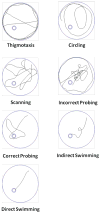
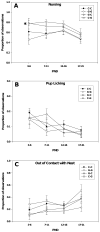


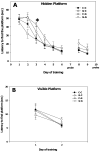
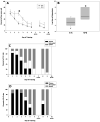

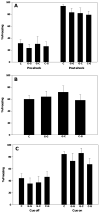
Similar articles
-
NTP toxicity report of reproductive dose range-finding study of Genistein (CAS No. 446-72-0) administered in feed to Sprague-Dawley rats.Toxic Rep Ser. 2007 Nov;(79):1-C2. Toxic Rep Ser. 2007. PMID: 18685712
-
Perinatal exposure to genistein, a soy phytoestrogen, improves spatial learning and memory but impairs passive avoidance learning and memory in offspring.Physiol Behav. 2014 May 10;130:40-6. doi: 10.1016/j.physbeh.2014.03.006. Epub 2014 Mar 15. Physiol Behav. 2014. PMID: 24637062
-
Pre- and postnatal development studies of lasofoxifene, a selective estrogen receptor modulator (SERM), in Sprague-Dawley rats.Birth Defects Res B Dev Reprod Toxicol. 2004 Jun;71(3):171-84. doi: 10.1002/bdrb.20013. Birth Defects Res B Dev Reprod Toxicol. 2004. PMID: 15282738
-
NTP Developmental and Reproductive Toxicity Technical Report on the Modified One-Generation Study of Bisphenol AF (CASRN 1478-61-1) Administered in Feed to Sprague Dawley (Hsd:Sprague Dawley® SD®) Rats with Prenatal, Reproductive Performance, and Subchronic Assessments in F1 Offspring: DART Report 08 [Internet].Research Triangle Park (NC): National Toxicology Program; 2022 Sep. Research Triangle Park (NC): National Toxicology Program; 2022 Sep. PMID: 36383702 Free Books & Documents. Review.
-
Disruption of the developing female reproductive system by phytoestrogens: genistein as an example.Mol Nutr Food Res. 2007 Jul;51(7):832-44. doi: 10.1002/mnfr.200600258. Mol Nutr Food Res. 2007. PMID: 17604387 Review.
Cited by
-
Comparative Developmental Toxicity of Flavonoids Using an Integrative Zebrafish System.Toxicol Sci. 2016 Nov;154(1):55-68. doi: 10.1093/toxsci/kfw139. Epub 2016 Aug 4. Toxicol Sci. 2016. PMID: 27492224 Free PMC article.
-
In utero oxidative stress epigenetically programs antioxidant defense capacity and adulthood diseases.Antioxid Redox Signal. 2012 Jul 15;17(2):237-53. doi: 10.1089/ars.2011.4372. Epub 2012 Jan 11. Antioxid Redox Signal. 2012. PMID: 22035055 Free PMC article. Review.
-
Evidence for sexually dimorphic associations between maternal characteristics and anogenital distance, a marker of reproductive development.Am J Epidemiol. 2014 Jan 1;179(1):57-66. doi: 10.1093/aje/kwt220. Epub 2013 Oct 11. Am J Epidemiol. 2014. PMID: 24124194 Free PMC article.
-
Multidimensional chemobehavior analysis of flavonoids and neuroactive compounds in zebrafish.Toxicol Appl Pharmacol. 2018 Apr 1;344:23-34. doi: 10.1016/j.taap.2018.02.019. Epub 2018 Feb 27. Toxicol Appl Pharmacol. 2018. PMID: 29499247 Free PMC article.
-
Inhibition of genistein glucuronidation by bisphenol A in human and rat liver microsomes.Drug Metab Dispos. 2012 Mar;40(3):481-5. doi: 10.1124/dmd.111.042366. Epub 2011 Dec 6. Drug Metab Dispos. 2012. PMID: 22146138 Free PMC article.
References
-
- Arai Y, Uehara M, Sato Y, Kimira M, Eboshida A, Adlercreutz H, Watanabe S. Comparison of isoflavones among dietary intake, plasma concentration and urinary excretion for accurate estimation of phytoestrogen intake. J Epidemiol. 2000;10:127–135. - PubMed
-
- Atanassova N, McKinnell C, Turner KJ, Walker M, Fisher JS, Morley M, Millar MR, Groome NP, Sharpe RM. Comparative effects of neonatal exposure of male rats to potent and weak (environmental) estrogens on spermatogenesis at puberty and the relationship to adult testis size and fertility: Evidence for stimulatory effects of low estrogen levels. Endocrinology. 2000;141:3898–3907. - PubMed
-
- Barha CK, Pawluski JL, Galea LAM. Maternal care affects male and female offspring working memory and stress reactivity. Physiol Behav. 2007;92:939–950. - PubMed
Publication types
MeSH terms
Substances
Grants and funding
LinkOut - more resources
Full Text Sources

